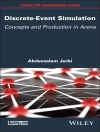The book is devoted to intelligent design of structures as a novel kind of designing based on computational intelligence. The proposed methodology based on computational intelligence has some heuristic and learning attributes typical for natural intelligence. Computer models of the structures are built on the base of the finite element method (FEM), the boundary element method (BEM) or coupling of FEM and BEM. The short description of possible discrete models of structures using these methods is included in the Chapter 2. Various kinds of intelligent approaches using sequential, parallel, distributed, fuzzy and hybrid evolutionary, immune and particle swarm algorithms and neural computing are presented in Chapter 3. Different kinds of optimization such as shape, topology, size and material optimization for structures under static and dynamical mechanical and thermo-mechanical loadings, structures with cracks and composite structures are considered in Chapter 4. Multi-objective optimization for coupled problems is also taken into account. Several numerical examples illustrating these kinds of optimization are presented for 2-D (plane-stress or plane-strain, plates, shells) as well as 3-D structures. Chapter 5 is devoted to special problems related to solving inverse problems in which boundary conditions, defects such as voids or cracks and material characteristics, are unknown. Closing comments summarizing the book are presented in Chapter 6.
表中的内容
Computational models of structures.- Finite element models of structures.- Boundary element models of structures.- FE&BE models of structures.- Intelligent computing techniques.- Introduction to computational intelligence.- Sequential evolutionary algorithms.- Parallel and distributed evolutionary algorithms.- Fuzzy systems and granular computing.- Fuzzy and stochastic evolutionary algorithms.- Immune systems and algorithms.- Artificial neural networks.- Hybrid computational intelligence algorithms.- Selected problems of knowledge engineering.- Structural intelligent optimization.- Formulation of single- and multi-objective optimization problems.- Shape, topology, material and size optimization and their parametrization.- Optimization of elastic structures under statical loads.- Optimization of elastic structures under dynamical loads.- Optimization of thermoelastic structures.- Optimization of cracked structures.- Optimization of nonlinear structures.- Optimization of composites.-Structural optimization in the uncertain conditions.- Expert systems in optimization.- Intelligent computing in inverse problems.- Formulation of inverse problems.- Identification of boundary conditions.- Identification of defects.- Identification of material properties.- Other computing problems: intelligent adaptive mesh, grid computation.












